
|
Sep 4, 2024
This dataverse presents a groundbreaking shift in the scientific understanding of ancient history, centering around the discovery of Atlantis in the Western Mediterranean. The papers compiled herein demonstrate that the Sardinian-Corsican geological block, identified as the remna… |
|
Sep 4, 2024
Usai, Luigi, 2024, “Religious Parallels between Nuragic, Proto-Jewish, Jewish and Christian Traditions: A Comparative Analysis”, https://doi.org/10.7910/DVN/QMBVXU, Harvard Dataverse, V1
… Religious Parallels between Nuragic, Proto-Jewish, Jewish and Christian Traditions: A Comparative Analysis, italian version This paper explores the parallels between Nuragic, Proto-Jewish, Jewish and Christian religion, with a particular focus on the cult of the “Bull of Light” and the figure of Jesus Christ as the “Light of the World”. The analysis draws on archaeological evidence and ancient texts, as well as the recent publication by Luigi Usai, to offer an integrated vision of the connections and transformations of religious symbolisms through the ages. The paper aims to examine how the Nuragic cult of the bull and the tradition of the golden calf can reflect a cultural and symbolic continuity, arriving at the hypothesis that the Proto-Jewish people are a Nuragic migration to Egypt, mixed with the local populations, thus mutating to become what will later be recognized as the Jewish people; in addition to the presence of the Sardinian population in Egypt, there is an Egyptian population and contacts in Sardinia, increasing the credibility of these hypotheses. …
Author Name: Usai, Luigi
Depositor: Usai, Luigi
Point of Contact Name: Usai, Luigi
|
|
Sep 5, 2024
Usai, Luigi, 2024, “Official discovery of Atlantis v1”, https://doi.org/10.7910/DVN/S36IEQ, Harvard Dataverse, V1
… In this groundbreaking paper, Luigi Usai presents the “Official Discovery of Atlantis,” an in-depth exploration of the identification of Atlantis within the Sardinian-Corsican geological block. Based on a meticulous analysis of archaeological, linguistic and historical data, this work offers an innovative and scientifically grounded perspective on the lost civilization of Atlantis, pinpointing its exact location in the context of the Western Mediterranean. …
Author Name: Usai, Luigi
Depositor: Usai, Luigi
Notes: This Harvard Dataverse presents the Sardinian-Corsican Atlantidean Paradigm, demonstrating a scientific paradigm shift led by Dr. Luigi Usai. Usai’s innovative works claim to prove the existence of Atlantis in the center of the prehistoric Atlantic Ocean, now recognized as the Western Mediterranean. His papers detail this groundbreaking discovery, offering evidence that redefines ancient history and the origins of Mediterranean civilizations, positioning the Sardinian-Corsican geological block as the remnants of the legendary Atlantis.
Point of Contact Name: Usai, Luigi
|
|
Sep 5, 2024
Usai, Luigi, 2024, “Indo-European as a Linguistic Construct: A Revision of the Atlantean Linguistic Origins of the Corsican Sardinian Block and the Diffusion of Post-Atlantean Languages in Europe and the Mediterranean”, https://doi.org/10.7910/DVN/H7UCOV, Harvard Dataverse, V1
… The theory of Indo-European has been accepted for centuries as the basis of numerous European and Asian languages. However, new historical and archaeological evidence (Usai, 2021-2024) suggests that this theory may have been a construct developed to explain linguistic similarities between populations that, in reality, share a common origin: the Sardinian-Corsican geological block, part of the ancient emerged land of Atlantis. …
Author Name: Usai, Luigi
Depositor: Usai, Luigi
Notes: This Harvard Dataverse presents the Sardinian-Corsican Atlantidean Paradigm, demonstrating a scientific paradigm shift led by Dr. Luigi Usai. Usai’s innovative works claim to prove the existence of Atlantis in the center of the prehistoric Atlantic Ocean, now recognized as the Western Mediterranean. His papers detail this groundbreaking discovery, offering evidence that redefines ancient history and the origins of Mediterranean civilizations, positioning the Sardinian-Corsican geological block as the remnants of the legendary Atlantis.
Point of Contact Name: Usai, Luigi
|
|
Sep 4, 2024
Usai, Luigi, 2024, “Location of the mythological Amazon warrior women people in Atlantis and the Caucasus”, https://doi.org/10.7910/DVN/CHS6TW, Harvard Dataverse, V1
This interdisciplinary study examines the possibility that the mythological people of the Amazons had their origins in the legendary Atlantis, identified with the Sardinian-Corsican block, as described in Plato’s dialogues. Subsequently, the myth of the Amazons could have moved t…
Author Name: Usai, Luigi
Depositor: Usai, Luigi
Point of Contact Name: Usai, Luigi
|
Luigi Usai’s theory about Atlantis contains verifiable data
Have you evaluated the possibility that Atlantis is the submerged Sardinian-Corsican block? It is indeed submerged, like Atlantis. There was the “elephant species”, as Plato says, in fact there was the Mammuthus Lamarmorae. It has a north-south orientation, as stated by Plato. The northern part is full of excellent winds for navigation, and in fact between Corsica and Sardinia there is one of the best surf schools in Europe. In a evemeristic vision, Poseidon could be a very ancient ruler of the Sardinian-Corsican island, later deified, when it was still dry land. In the Sardinian-Corsican block the toponymy, very useful to archaeologists, clearly recalls the sources of hot and cold water placed according to the Platonic story on the island of Atlantis by Poseidon: there are fractions of villages called “Acquacadda” (hot water, in Campidanese Sardinian language), S’acqua callenti de basciu (The hot water below, in Campidanese Sardinian) and S’Acqua Callenti de Susu (The hot water above, in Campidanese Sardinian dialect), while in the nearby town of Siliqua is still present today the cold water source of Zinnigas; in Siliqua the “Castello d’Acquafredda”. In short, even toponymy recalls the Platonic myth. Furthermore, Solon heard the story in the Egyptian city of Sais, and Sais is a Sardinian surname, and Sardinia is a plateau that emerged from the submerged Corsican Sardinian geological block, so everything still fits perfectly. Sais, in addition to being a surname belonging to the Sardinian-Corsican territory, is also the name of a geographical fraction near Narcao: localities of lower Is Sais and upper Is Sais of Narcao (SU), in Sulcis in present-day Sardinia. The toponymy reappears in an apparently correct way, and precisely in the same geographical points (Sulcis, in present-day Sardinia) where the toponymy recalls the sources placed by Poseidon. And curiously, still in Sulcis, there is a locality called Piscinas… another toponymy that recalls the theme of water or flooding. While in relation to Egyptian toponymy, we find a locality called “Terresoli” (Land of the Sun, in Campidanese Sardinian dialect) which closely reminds us of Heliopolis (City of the Sun). Are all these toponymic “coincidences” just the result of chance or do they hide something that until now perhaps no one had ever noticed? Furthermore, when Plato speaks of the measurement of 10,000 stadia relating to the plain of Atlantis, this count would also be plausible and acceptable: in fact, if we exclude “the band of mountains that fall directly on the sea” (i.e. the mountains now present in Corsica and the right side of Sardinia such as the Gennargentu), measuring the perimeter of the remaining territory, it is slightly greater than 10,000 stadiums (keep in mind that there are at least 2 types of Greek stadiums, including the Attic stadium; but the archaeologists have understood me well and can do the cross-checks following the scientific method). Summarizing for clarity: it is possible that the priests of the city of Sais were trying, in their own way, to explain to Solon a geological event of submersion of the Sardinian-Corsican block in the center of the Mediterranean, asserting that a lineage lived in the Sardinian-Corsican block which he had conquered as far as Libya and Egypt, and then as far as Tyrrenia. In this case the sinking period would be around, approximately, to 9600 BC, differently from the hypothesis of the Nuragic Sardinian Atlantis, which is clearly wrong for the reasons you rightly listed. If all this were correct, therefore, it would mean that the stratigraphic analyzes would have to go down into the ground until they find the remains of about 11,600 years ago, in order to find the remains of the “capital” of Atlantis or its population, and the reason would also be very clear for which no bodies of the deceased Atlanteans are found in the Nuragic layers. I am clearly willing to expand on my statements for your clarity and better scientific analysis. One could continue by listing all the points congruent with the Platonic affirmations. Also: Frau (whom I sincerely thank), places the Pillars of Hercules, if I’m not mistaken, between Sicily and Tunisia. Effectively, there is a possibility that these have been found. In fact, the scientific community around the world is in the process of analyzing the very recent discovery of what appear to be structures of an anthropic nature located right in the Strait of Sicily, in many places, but exemplary can be considered the remains, perfectly parallel, with geometries perfect and right angles, found through bathymetric analysis of the European Union’s Emodnet System, in Birsa Bank, exactly between Sicily and Tunisia, and a short distance from Pantelleria. A second anomalous finding from the bathymetric point of view was made, of a structure with an apparent rectangular shape in the Sicily-Malta continental carbonate platform, flanked by the Sicily-Malta Continental Escarpment (Sicily-Malta Escarpment for geologists). Currently, the scientific world has not yet formalized whether these are actual scientific discoveries: from the bathymetries of at least 5 world bathymetric systems, they appear as such. Official confirmation is awaited, but in the meantime you can check these news online, which however have, fortunately, already been around the world. Regarding the Gadirica area, it is possible that it was not the name of Gadir (Cádiz), but of a homonymous geographical area of the Sardinian-Corsican block, now submerged. Why would it have the same name as Gadir? For the same reason that Teulada in Sardinia has the equivalent Teulada in Spain; Pula has a Pula in Dalmatia; Aritzo in Sardinia corresponds to Aritzu in Spain; Monastir in Sardinia corresponds to Monastir in Tunisia, and I could go on and on, but I risk boring you. Because of this, Gadir in the Sardinian-Corsican geological block would correspond with Gadir (ie Cadiz). I have not yet had the opportunity to verify this statement about these toponyms with specialists, but you will certainly be more capable than me in counter-verifying, thanks in advance. Why then was all around the submerged Sardinian Corsican island full of mud that prevented navigation? Because the sea currents, after the sinking of the Corsican Sardinian geological block, began to tear away layers of soil that emerged from the surface as Sardinia does now, creating over the millennia what geologists today call the Sardinian “continental platform”. race. As the sea currents “washed” away layers of soil, destroying all population centers and structures that had been built before 9600 BC on the Sardinian-Corsican coastal strips, the water was clouded by muddy materials, and this is clear and obvious to thought and reflection. In Atlantis “there lived the oldest ones”, and we all know of the Corsican Sardinian centenarians, to the point that the Sardinian genetic code has not only been and is studied all over the world, but has even been stolen (see the theft of 25,000 test tubes with 17 suspects, following the theft of the DNA test tubes of the Sardinians which according to the press took place at the Genos Park of Perdasdefogu in August 2016). That the Sardinian-Corsican block is ancient for the ancients is obvious to educated scholars: just mention the discovery of a fragment of carapace of Arthropleura armata of the Carboniferous of Iglesias (PAS Museum – EA Martel of Carbonia), but those interested can inquire at a paleontologist, one above all the extraordinary Daniel Zoboli. It is therefore obvious that the learned Egyptians were able, from many details, to understand the antiquity of the Sardinian-Corsican block, which they called Atlantis. Plato affirms that from the Isle of Atlantis (which here is supposed to be the Corsican Sardinian block) it was possible to go to the surrounding islands and to what is really the continent. But we Sardinians on a linguistic level, fortunately, have still kept these ways of saying: “Deppu andai in Continenti” (I have to go to the Continent), when we have to go to the boot. This statement makes those who hear us Sardinians die laughing, but fortunately it helps us understand what Plato meant: probably, linguistically, when the Sardinian-Corsican block was dry land we linguistically called the island “continent”. Leaving the island was “going to the continent, to another continent”. After the sinking, this linguistic use remained at the level of Sardinian dialects, so we say that “we are going to the continent”, astounding those who listen to us. In short, all Platonic statements, if placed in the right context, are rational and explainable correctly. However, they require a certain mental humility, a certain “willingness to listen”. Since they are strong affirmations, which have consequences, they probably need a few months of reflection and meditation before they can be properly assimilated and digested. Incidentally, it’s been 2400 years since nobody understood what Plato was talking about, indeed, it was stated almost everywhere that Plato was exaggerating. Regarding the sinking of the Corsican Atlantean Sardinian island, this would be a geological problem, where I can only speculate. For example, there may be at least three concomitant causes: Meltwater Pulses, in particular meltwater pulse 1b, also studied by NASA technicians. Furthermore, geological settlement movements due to what geological experts call “slab roll-back”. Furthermore, it has even been hypothesized, but still being verified, that a tectonic fault passes under the Sulcis, the same one that passes under Pompeii and Herculaneum, arrives under the Sulcis and continues up to Gibraltar. In possible support of the thesis that Atlantis is the Sardinian-Corsican island partially submerged and its continental shelf currently submerged, we report here some scientific evidence. On February 28, 2017, a study was published in the journal Scientific Reports of the Nature group which presents new archaeogenetic data. These data reinforce the archaeological evidence of the clear cultural discontinuity between the first inhabitants of the island, dating back to about 11,000 years ago, and the architects of its definitive population which occurred about 3,000 years later, with the arrival of the first farmers-breeders. . This important discovery is based on the analysis of DNA extracted from the skeletal remains of two individuals buried in the prehistoric shelter of Su Carroppu di Sirri in Carbonia. At present, these remains represent the oldest evidence of human presence on the island. Now, from 9600 BC to today about 9600 + 2023 years have passed, or 11623. The evidence cited above is precisely 11,000 years ago. A study was conducted on the clear cultural discontinuity between the first visitors to the island of Sardinia around 11,000 years ago and the architects of its stable and definitive population, which took place around 3,000 years later with the arrival of the first farmers-breeders. The study is based on the analysis of DNA extracted from the skeletal remains of two individuals buried in the prehistoric shelter of Su Carroppu di Sirri in Carbonia, which represent the oldest direct evidence of human presence on the island. The study is part of the research project funded by the Autonomous Region of Sardinia on the history of the first Neolithic population of the island. The genetic sequences obtained were compared with ancient and modern data and revealed a large difference in the genetic variability of the current population of the island compared to the first humans who frequented it, with most of the genetic variability appearing to have been determined by the migratory flow of populations who introduced the productive economy starting from the most ancient Neolithic. The Mesolithic sequences of the Su Carroppu samples belong to the groups named J2b1 and I3, which have very low or low frequencies in Europe. The relevance of the scientific discovery stimulated the intensification of research in the key site of Su Carroppu, already investigated between the years 1960-1970 and currently the subject of systematic excavations directed by the University of Cagliari. Happy searching to all of you. If anyone is interested, the theory of Atlantis as the Sardinian-Corsican island and all of its continental shelf currently submerged, can also explain other things in a very intuitive way. For example, the Greeks and Romans probably thought that the submersion of the Corsican Sardinian geological block had been a punishment from the gods for the arrogant inhabitants, who “overbearingly attempted, in one fell swoop, to invade the lands on this side of the Colonne D’ Hercules (perhaps located in the current Birsa Bank, an apparently anthropized seamount below the Strait of Sicily, data scientifically verified through Emodnet bathymetries). First I tried to clarify the toponymy. Now we can try to clarify the onomastics: the Gods punished the Sardinian-Corsicans, called by the Egyptians “Atlanteans”, according to what was stated in the Platonic texts around 9600 BC, “crushing the Sardinian-Corsican island underfoot, and it sank” (the quotation mark is my hypothesis). And this is easily explained why the Greeks called Sardinia Ichnusa (footprint) and the Romans called it Sandalia (sandal imprint). Even the name is now very clear: they were Greeks and Romans who mocked Sardinia, which was what remained of the great Sardinian-Corsican power, which the Egyptians called “Atlantis” in the story given to Solon, who told it to Dropides, who spoke of it to grandpa Critias, who told him to grandson Critias, who told Socrates in the Platonic dialogues of Timaeus and Critias. If any reader wants to know the original history of the Corsican Sardinian geological block, before it sank around 9600 BC, he is obliged to read Timaeus and Critias, two texts written by the Greek Plato. All the rest of the texts published to date have done nothing but add entropy, chaos, confusion to the history of the Sardinian-Corsican block, as characters like Cayce or Madame Blavatsky, professional charlatans, used the Atlantis argument to money, publishing books full of lies and entertaining the curious, especially after they saw that Ignatius Donnelly’s book, entitled ATLANTIS: THE ANTEDILUVIAN WORLD, had had an incredible worldwide media coverage. Furthermore, cinema and television have introduced a lot of nonsense on the subject of Atlantis, so when we talk about this topic many have in mind pieces of films or cartoons or fantasy books that have nothing to do with it. what Plato said. Hence: the Greek name Ichnusa, and Latin Sandalia, confirm my hypothesis that the ancients thought that the gods punished the Sardinian-Corsican island by crushing it underfoot. There was still no geological science as we understand it today. Furthermore: the Wadati-Benioff tectonic fault that passes under Pompeii and Herculaneum, and which destroyed them, is probably the same that continues as far as the Sulcis in present-day Sardinia and continues until it reaches the current Strait of Gibraltar. Since this fault is activated in geological times, the citizens who live in the Sulcis are not aware of the seismic activity. When this releases its elastic energy, frightening disasters occur, such as the opening of the Strait of Gibraltar, the destruction of cities and places such as Pompeii and Herculaneum, or the submersion of the Sardo-Corsa island. But the submersion is probably also due to another very important cause: the geological settlement of the Sardinian-Corsican island following the “slab roll-back” which, as revealed to us by the ancient Egyptian priest, took place around 9600 BC. The Slab Roll-Back, concomitantly with the tectonic awakening of the fault present under the Sulcis and currently unknown to the official geology which instead knows a fault further south that borders Africa, and perhaps also due to the succession of various post-glaciation Meltwater Pulses Wurm, caused the partial submersion of the Sardo Corsa island. Now, out of the water, only the tops of the mountains remained, which we now believe to be separate islands, and which our civilization now knows by the names of Sardinia and Corsica. Furthermore, all the toponymy and onomastics present in Sulcis leave one question: why do all these Sulcis places recall Plato’s story? We will then be able to pick up the Platonic text again to try to understand why. First of all, if the Pillars of Hercules were located at Birsa Bank, and the Sardinian-Corsican island and its currently submerged continental shelf is really Atlantis, this means that in 9600 BC it was customary to call the current Mediterranean Sea with the name of Sea Atlantic (i.e. sea of the island of Atlantis) or Atlantic Ocean (Ocean of the currently submerged Sardinian-Corsican island, i.e. Atlantis). I haven’t read Frau (2002) yet, so I don’t know if he has already published some of my statements, in which case I apologize in advance. Mine are only reflections resulting from the reasoning made in the last two years. Please let me know of any shortcomings or apparent plagiarism, thanks in advance. If all of this is true, then Poseidon was perhaps a man, and obviously not a deity (why, have you ever met one in person?), and this man fell in love with a teenage girl whose parents had died, Clito. The Platonic account states that Poseidon surrounded the hill with water channels. Now, just the Sulcis (but look what a coincidence! Or maybe it’s not a coincidence?) is volcanic in nature, so right in the center of the Sulcis there is a hill or mountain, if you like, not too high, and this is visible using satellite systems such as Google Maps or Google Earth, which even allows you to tilt the view by pressing the shift key on the computer keyboard. But are these places really ancient as Plato says or are they very recent places? Easy to verify: right in the center of Sulcis, you can verify that there are prehistoric IS ZUDDAS caves, and nearby there is ACQUACADDA (Poseidon put two sources there, one of cold water and one of hot water, and the locality is called Acquacadda …but look what an incredible coincidence!Of course I have imagination!) and very ancient archaeological finds have been found in the locality of Acquacadda. Now an expert might argue that the finds, for example, are only 6,000 years old. Note: an expert should look for the stratigraphic layers of 9600 BC: only then would it be possible to obtain more detailed information. Instead, currently, in these places groups of children are brought to watch. In my opinion this is dangerous but I’m not a stratigraphy specialist so I have no say in the matter. Also in Sulcis, the Su Benatzu cave was found, which is an authentic archaeological treasure, which could contribute to research on the topic “what happened in the millennia after the sinking of the Sardinian-Corso-Atlantean island?” (I have to develop this topic). Furthermore, in support of the theory of the submerged Sardinian-Corsa Atlantis, there is another scientific discovery of marine archeology: the discovery of a load of 39 ingots of orichalcum by the extraordinary Sebastiano Tusa off the coast of Gela, in Sicily. Newspaper articles speculate that they came from Greece or Asia Minor, but now that we have all this information about the submerged Sardinian-Corsican island, we can assume that they came from this now submerged island, which is located a very short distance away, which makes the hypothesis very plausible. The antiquity of the semi-submerged Sardinian Corsican geological block is known to official science, and in particular also to geology, which is aware of the so-called “rotation of the Sardinian-Corsican block” which began about 40 million years ago, after the detachment of the from the present coast of Spain and France, and lasted about 15 million years. This is possible to know, as stated by the well-known geologist Mario Tozzi, because a great deal of research has been done in the paleomagnetic field, which showed how the only way to explain the geomagnetic orientation of the Sardinian-Corsican stone and geological structures is to bring it back to coincide with the current Hispanic-French coasts. Furthermore, the fact that the geological structure of Sardinia has various types of Graben Horst may have also contributed to the possible submersion, so that these geological adjustments may also have contributed to important and significant telluric displacements for the Sardinian-Corso-Atlanteans people who lived there. For example, the Campidano plain in Sardinia is a Graben Horst. The antiquity of the Sardinian-Corsican geological block is clear to geologists from all over the world as there are even “graptolites”, to which the Sapiens program by the extraordinary geologist Mario Tozzi has dedicated videos (see: “Goni’s Graptolites at Sapiens”). Now, if Atlantis is really the submerged Sardinian-Corsican block, then we have to verify again what Plato said. Atlantis dominated the Mediterranean also over Libya and Tyrrhenia, and over many islands scattered on the Ocean (let us remember that we have already shown that Oceanus, in the texts of 9600 BC cited by the Egyptians, is the Mediterranean Sea, and not the current Atlantic Ocean ). But if it is true that it dominated, then perhaps there were linguistic influences as well? Of course, and the evidence already exists: many scholars have noticed the incredible similarities between Sardinian dialects and languages and the Corsican language, Sicilian “dialect” (or should we say the language?) (Minimum Dictionary. Sardinian Corso Siciliano. Correspondenze nel Gallurese, by Emilio Aresu and others),mainstream as no one imagined the enormous importance of this type of work, which shows to all intents and purposes that the Sardinian-Corsican-Atlantean languages have spread throughout the Mediterranean. And now, thinking about it, we can begin to understand that even in the study of languages there has been an inversion: it was believed that Sardinian resembles Spanish and Portuguese because we have been “dominated” by them in recent history, while probably the Spanish and Portuguese languages, in reverse, were imposed by the prehistoric Sardinian-Corsican-Atlantean dominion of which, until now, we were not aware. New Sardinia has dedicated an article about it entitled: «That thread that binds Sardinians to Basques» by Paolo Curreli in which an exceptional and ingenious linguist became aware of this Sardinian Corsican Atlantean linguistic heritage, and made it known to the world with his extraordinary works (from the article: “Hundreds of similar words in the study of Elexpuru Arregi. Many linguistic affinities . Two towns with the same names: Aritzo and Aritzu. But also Uri and Aristanus. The holly in Sardinian, galostiu, in Basque is gorostoi”). But Atlantidologists cannot arrive at these texts if no one shows their correlation with the theme of Atlantis. There is therefore still a lot of work to do, and this is just the beginning of a new era of studies. The peoples of the Corsican Sardinian block therefore influenced in prehistoric times the evolution of the current languages and dialects and minority languages of part of the Mediterranean and perhaps also of other places. Here is now explained in a very simple and crystalline way why the Sardinian, the Corsican, the Sicilian, the Basque, the Spanish, the Portuguese, the Veronese dialect (see for example all the names of asparagus, vegetables, etc. which are identical to those Sardinians) and who knows which others are so similar. Now that we have this information, we can resume the overtime work of theProfessor Bartolomeo Porcheddu and confront your statements, which are now all perfectly correct and all not only explainable, but even understandable and obvious to reason. What Professor Bartolomeo Porcheddu says is right and correct (in my eyes it is obvious, there is not even need to underline it, but in the interviews we sometimes get the impression that your theses are considered “fringe theories”, as if they were pseudo -science, while instead they are a demonstration of genius and intuition out of the ordinary). There are various sites that show how by now various scholars were already realizing the linguistic similarities between languages and dialects of the Sardinian-Corsican geological block and other languages and dialects scattered around the Mediterranean in particular, see also this article. Yet another article that talks about it is this one. In short, by now serious scholars were realizing that there was information we were not aware of, as if there really was an ancient civilization that was missing from the appeal of Ancient History, as Graham Hancock states: this civilization is the one that lived in the Corsican geological block currently semi-submerged, when this was an island and dry land: Graham Hancock was therefore right on this point. The impact of this extraordinary discovery creates a sort of shock in the scholar’s mind: in fact, now there is a sense of dephasing, of distrust. How is it possible that hardly anyone had ever noticed, if we exclude some brilliant scholars who have even been laughed at for their claims? How is it possible that Plato was not believed? Even Aristotle himself did not believe him: “The one who invented Atlantis also made it disappear”. In conclusion: the old Egyptian priest was telling Solon, around 590 BC, that the Greeks are a young people, as the men of letters cyclically died from the catastrophes that periodically occur on the planet, and therefore their opinions on the past were like fairy tales, because they had not fixed historical events in written language. The Egyptians, on the other hand, fixed information on stone, so they had memories of facts that had faded over time. And he doesn’t immediately tell him about Atlantis, he talks about the first Athens, founded 1000 years before the city of Sais in Egypt. At that time, the Greeks accomplished a most extraordinary feat of all: they managed to free all the peoples of the Mediterranean from the invasion of one people,
There are other discoveries to support the Sardinian Corsican Atlantis thesis, but searching for the material takes time and sacrifice. I will do my best to provide as much evidence as possible to all of you readers, archaeologists, journalists and scientists. It is important that all possible evidence is presented in order to be able to show you that these are not mere coincidences. A coincidence would be normal. Four as well. But when we bring 40+ coincidences to support, then maybe it’s not coincidences but potential evidence. Thank you for the very interesting arguments that you have made public in the video. Best regards. v. 104
I’m Luigi Usai, an independent sardinian researcher. I think that Atlantis is the Sardinian Corsican Graben Horst underwater continental lithosphere block submerged by the Meltwater Pulses and destroyed by a hidden Mediterranean subduction zone, Capital is Sulcis-Iglesiente. I think that we should focus on testing if this possibility is or not true, starting to do new research from other point of views.
I’m privately collecting all the scientific evidence that support my thesis, and I’m trying to find all the information that disproves it.

I published 3 books about my ideas of Atlantis, which I call the “Sardo Corso Atlantidean Paradigm“, and which I consider as a scientific paradigm shift, which puts the Sardo Corso Atlantidean culture as the origin of, at least a part, of nowaday culture.
Disclaimer:
I am not an expert.
I am not the first on Earth to write about Atlantis, so it’s possible that my ideas were already told by someone else. If this is the case, please just let me know. I thank Mr. Sergio Frau for his amazing works, courage and passion about knowledge. Same thanks to Robert Ishoy, for helping humanity solve the Atlantis enigma, and many thanks to Professor Mario Tozzi. Thanks to all the scientists, researchers, students, readers… who kept Atlantis alive till today.
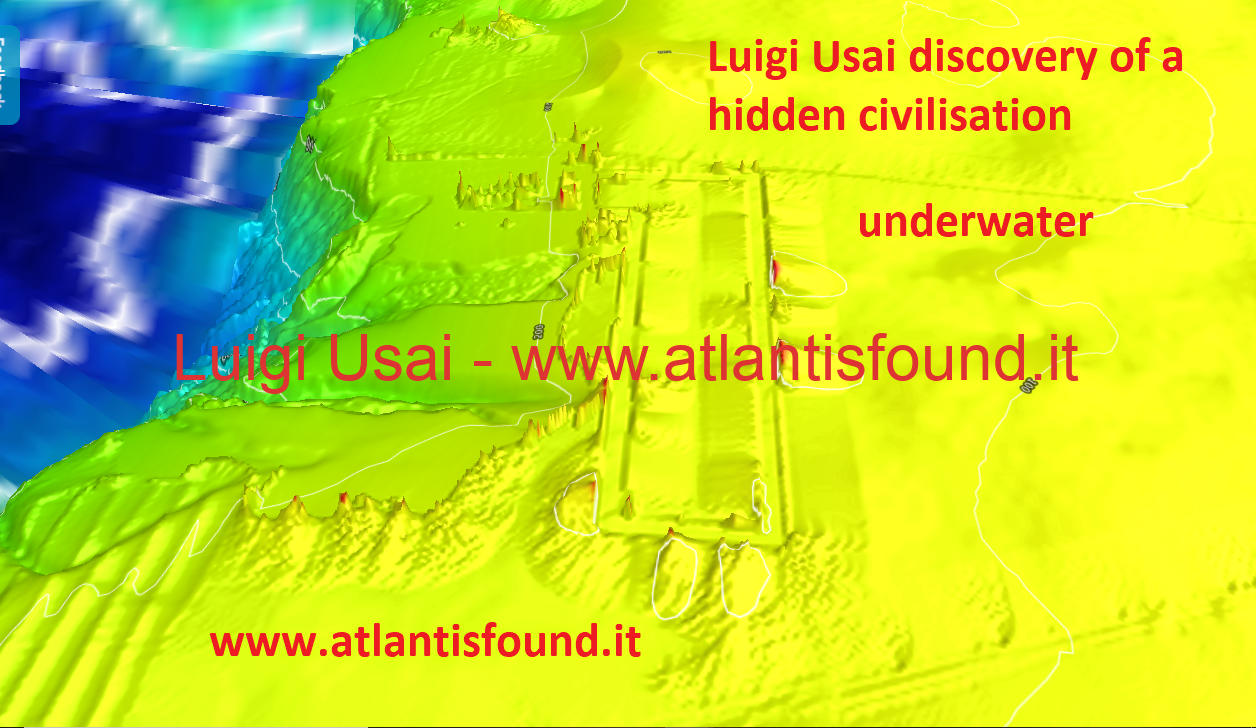









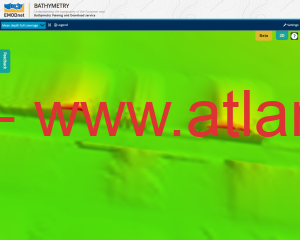
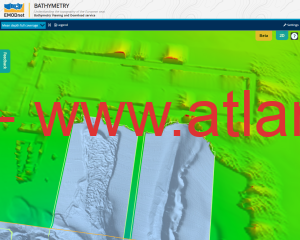







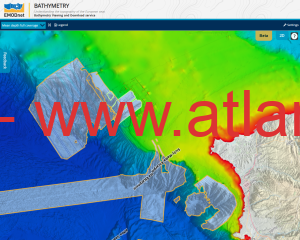


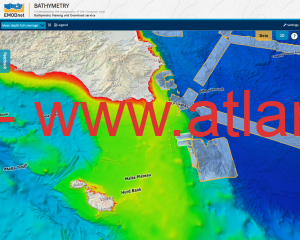







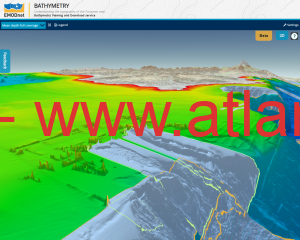





In January 2021 Luigi Usai (i.e. me), an independent researcher, released a demonstration according to which Atlantis is the Sardinian Corsican geological block submerged under the Mediterranean, and the capital of Atlantis is Sulcis in present-day Sardinia: with a satellite map it is It is possible to note that the Sulcis is made for concentric grooves, just as stated in the myth of Atlantis. The sinking of Atlantis is due to the sudden melting of the ice following the glaciation called Würm and to various tectonic shocks caused by a fault that passes right under the Sulcis, under the bottom of the Mediterranean. It is known to geologists that the level of the Mediterranean Sea reached -120 meters below the current level about 14,000 years ago. Also known is the so-called “Messinian salinity crisis”, during which Sardinia and Corsica were joined due to the lowering of the sea level by over one hundred meters, and could be covered on foot.

At that time, according to Usai, Sardinia and Corsica and a large part of the currently submerged coasts formed what appeared to be a large island, which was called in the third chapter of the Timaeus and in Critias, by Plato, with the name of Atlantis. At the center of the Atlantean plain and the present Campidano plain, there would be what was the capital of Atlantis, also known as Atlantis, and which started from a hill near the small village of Santadi, forming concentric circles of land and sea. It is still possible to note how, starting from Santadi, the whole urban plan develops in concentric circles, even portions of mountains. There is also a vast toponymy related to the myth of Atlantis.

In fact, as Usai points out, next to Santadi there are many localities whose name recalls the hot and cold water sources created by Poseidon, who according to Usai was a simple man, probably a King, and not a God. Capital of Atlantis a hot spring and a cold water spring. In fact, still today there are fractions of villages called “Acquacadda” (Acqua Calda, Campidanese in Sardinian language), S’acqua callenti de basciu (L’Acqua di sotto, in Campidanese Sardinian) and S’Acqua Callenti de Susu (L ‘ Hot water above, also in Campidanese Sardinian dialect, the dialectal variant of the Sardinian language spoken in southern Sardinia), while in the nearby town of Siliqua the cold water source of Zinnigas is still present today. Still in Siliqua, a small town also located in the province of Cagliari, there is still the “Castello d’Acquafredda”, currently known for the famous story told by Dante Alighieri about Count Ugolino, who lived there.

Furthermore, reports Usai, the tridents of Poseidon were found carved in the Neolithic and Palaeolithic rocks found near the town of Laconi, in Sardinia. Next to Santadi there is a town called Narcao, which has two hamlets, called “Is Sais Superiore” and “Is Sais Inferiore”; this is a clear reference according to Usai, to the city of Sais in Egypt, in which the high priest Sonchis revealed the story of Atlantis to Solon, the famous Greek politician. Furthermore, the priests who according to tradition taught these historical facts to Solon were Sonchis of Sais and another priest of Heliopolis: in fact Heliopolis in Greek means “city of the sun” and next to Acquacadda there is a hamlet called “Terresoli”, which means in Sardinian Campidanese “Terra del Sole” (“Terr’è Soli”), a clear reference to Heliopolis.

The toponymy is incredibly vast: in fact, an analysis shows that the toponymic term Sulcis is an ablative locative of the Latin “Sulcus, Sulci”, which means “The place of the furrows”, ie the place where Poseidon created the concentric furrows of the capital of Atlantis starting from the hill where his wife Clito lived, from whom he had five pairs of twins, whose eldest son, Atlas, will give the name to the Island of Atlantis. The term Sulcis therefore, implicitly, makes us understand that the Romans were aware that Sulcis was the capital of Atlantis: otherwise why give it this name?
It has been scientifically demonstrated by Professor Carlo Lugliè of the University of Cagliari that at least the Su Carroppu cave was inhabited around 9000 BC, that is precisely in the period cited by Plato according to which Atlantis existed; it is not yet clear whether this DNA studied could be Atlantean DNA. The sinking of Sulcis has already been demonstrated by scientists in a famous scientific paper, entitled: “Submarine Geomorphology of the Southwestern Sardinian Continental Shelf (Mediterranean Sea): Insights into the Last Glacial Maximum Sea-Level Changes and Related Environments”.




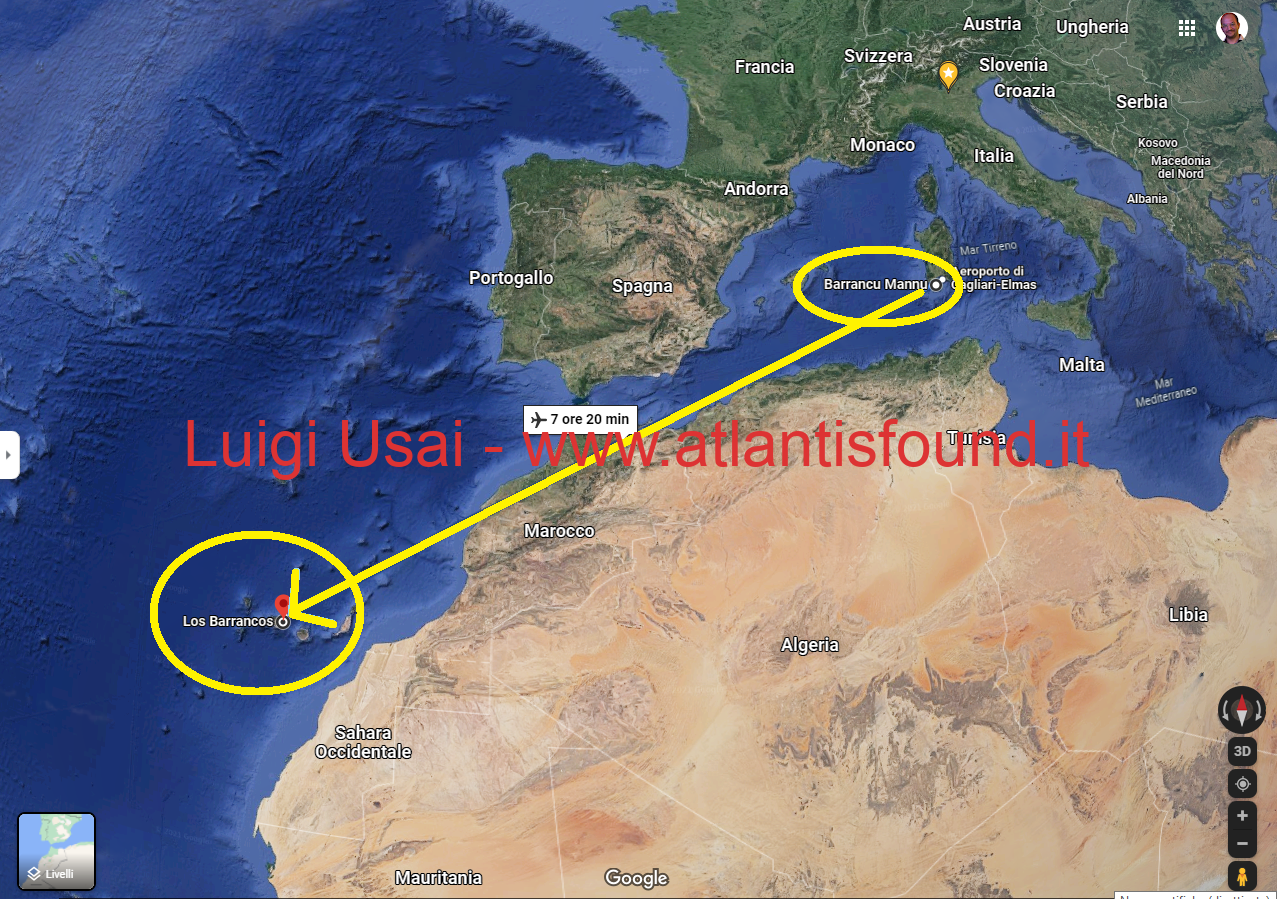



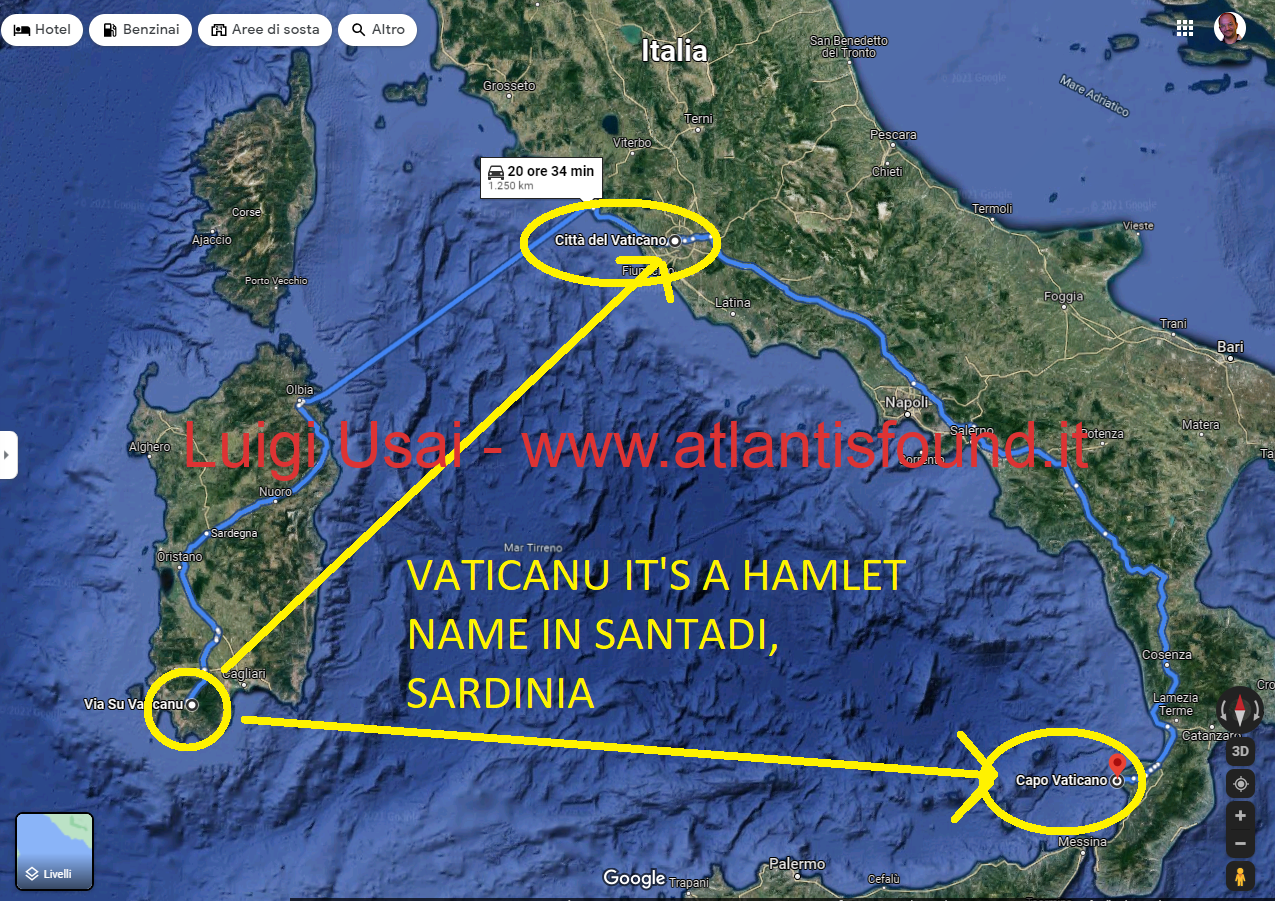

The Sardinian Corsican Atlantis with Sulcis capital, after the sinking, clouded all the waters of the Mediterranean, for this reason Plato said that navigation was impossible. But after hundreds of years, when the waters calmed down, they became very clear and transparent, as are now the waters of Sardinia. Corsica and Sardinia are therefore highlands of Atlantis, now sunk under the Mediterranean and visible using a satellite map.
The Italian government has not yet officially responded to Luigi Usai’s report of the discovery of Atlantis.